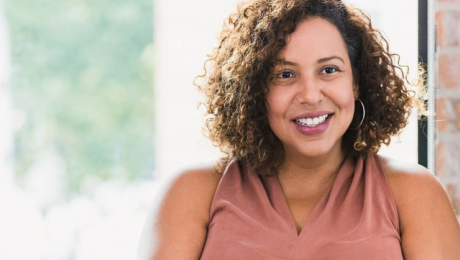Group therapy offers the benefit of professional guidance with peer-based camaraderie and emotional support. Groups can augment the work done individually. And in some settings, group therapy can be even more beneficial than individual treatment.
Always Discuss and Reinforce the Rules
In all forms of group psychotherapy, it’s important to maintain a consistent level of predictability. Having ground rules in place- and reminding members of them- offers a sense of ongoing structure. This becomes especially important if you facilitate open groups where new members are constantly being integrated into the dynamic.
Discuss confidentiality: Briefly remind group members of confidentiality limits. Identify yourself as a mandated reporter and explain what that entails. While you can’t ensure that members keep the information confidential, mention the benefits of doing so. When clients respect the integrity of their group, they’re more inclined to respect confidentiality.
Reinforce ongoing respect: Each group member should feel that the group is safe, supportive, and inclusive. It’s essential that you’re able to model addressing inappropriate behavior and handling it effectively.
Encourage group members to give feedback on group rules: It can be helpful to make group rules a collaborative process, particularly if you facilitate closed groups with higher levels of engagement. From this approach, members play an instrumental role in creating effective group dynamics.
Restate the group objective: Every group therapy session should have an objective, whether it’s learning a new skill, practicing new techniques, or exploring difficult emotions. It can be helpful to remind group members of this objective when you begin the group.
Never force group treatment participation: Group work provides a unique therapeutic process, but members should never feel pressured or ashamed to speak. Some people arrive to groups after a complex history of unhelpful or traumatic group sessions. Many might also have poor socialization techniques, making it difficult to feel safe within therapy groups.
Pay Attention to Group Cohesion
Group cohesion refers to how group members connect to the group individually and as a whole. Sometimes, based on the group’s purpose, this happens easily. But other times, group cohesiveness poses challenges.
One of the benefits of group therapy is working with resistance and discomfort in the here and now. As much as possible, encourage members to connect group members on their shared experiences rather than their differences. Within that, groups provide a rich experience for building social support and deepening emotional intimacy.
Encourage clients to give feedback to one another: Unless you’re running a psychoeducational group, most groups should be collaborative. Successful group treatment means members of the group are engaging with one another- it shouldn’t just be you speaking to the crowd as an expert. Over time, members of the group should willingly step in to address problems when they arise.
Identify how other group members relate to each other: Make a note of how certain members react in the here and now. You may choose to address these nonverbal or verbal patterns based on the context of the group. But even if you don’t, knowing where group members stand with one another is an important part of monitoring overall cohesiveness.
Always address ruptures: Ruptures within a group setting are inevitable, but a successful therapy group can grow and become even stronger after a rupture. That said, it’s your job to model being comfortable addressing the tension. Give group participants the opportunity to express themselves and consider if individual group members might need attention after the group.
Solicit Ongoing Feedback
Measuring a successful group therapy session isn’t always obvious, so it’s helpful to encourage clients to provide feedback on what is and isn’t working. Some therapists achieve this by giving brief assessments after each group session or treatment episode. These can be effective for your own training purposes.
Group facilitation requires ongoing self-reflection, and it’s helpful for practicing therapists to seek feedback from other professionals. This is where supervision, consultation, and your own therapy can be paramount for professional development.
Commit to Developing Strong Group Therapy Techniques
Mastering the craft of group therapy starts with identifying what you most want to achieve in a particular group. In a support group, for instance, the goal might be for members to strengthen the level of connection they feel with others over a specific issue. In a relapse prevention goal, the goal would be to empower members to use specific tools to avoid a relapse.
Having this goal at the forefront of your work- starting from that first group session- will help you develop various group therapy activities.
Curriculum Vs Your Own Group
Following an evidence-based group curriculum provides a sense of ongoing structure for your group. Likewise, these types of groups may be required in certain settings. The main benefit is that these groups have been developed, tested, and demonstrated as effective. You also don’t have to come up with your own group activities or schedule,
That said, many therapists value the flexibility of creating their own group curriculum. Having your own group activities can be advantageous, especially if your group combines elements of several different theoretical orientations.
Encourage Creative Expression
In all group discussions, creative expression offers group members a chance to be vulnerable even if talking about their feelings directly feels uncomfortable.
Creative expression is multifaceted, but it may include:
- drawing and painting activities
- writing assignments
- collaging
- psychodrama and other experiential exercises
- music, song, and dance
Have Group Members Bring In Their Own Topics
Group settings can feel more collaborative when a group therapist encourages members to come to groups prepared with topics and activities. This is also empowering for group members, as they can focus on what feels most important to them.
You may also consider assigning various group members to act as leaders within the group. From this framework, each member shares responsibility for bringing valuable insights into the overall dynamic.
Final Thoughts On How to Run Group Therapy
Group therapy offers a unique approach toward strengthening peer connection and symptom relief. Successful group therapy is a collaborative effort, but the group facilitator ultimately sets the stage for building safety and connection.




